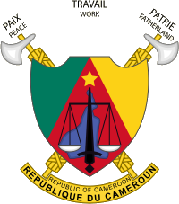Amidst the commercial and festive dimensions of the 7th edition of SIARC, the fair also witnessed an educational and scientific part. The educational and scientific part which brought together experts and crafts persons entailed reflections and knowledge exchange sessions which marked its debut on Thursday December 20th till December 22nd 2021 at the Exhibition Hall of the National Museum.
Speaking during the inaugural session, Mr. TCHANA Joseph, Secretary General of MINPMEESA stated that the reflection and knowledge exchange dimension of this year’s edition is designed to reinforce the capacities of craftsmanship through various outlined thematic sessions. To him, these sessions have the objective of enlightening craft persons on the Cameroonian public policies of craftsmanship put in place especially in terms of infrastructures such as the construction of the craft villages and the elaboration of the legal framework and decisions that facilitate the better organization of the craft sector. He did not fail to mention that the inaugural session as well as other thematic sessions that followed suite also served as a channel to enlighten crafts persons on the present context of the sector, techniques for the amelioration of the quality of crafts products, respect of norms and quality as well as the marketability of their products. As such, he outlined that some support perspective envisaged towards fostering the sector such as the organization of galleries in the regional delegations, the revitalization of crafts villages as well as the creation of the chamber of craftsmanship amongst others will be put in place.
Sampling the impressions of participants relative to this sessions, Mrs. KWANTANG Suzanne Ngatchu, a craft person from meme division, South West Region who took part in this sessions expressed her satisfaction by stating that the thematic sessions were useful and knowledgeable. She went further to explain that she learned techniques on acquiring a great visibility as concerns her crafts works, the process and documentations needed to move from the informal to the formal sector, techniques for the quality amelioration of her products so that it meets international standards and be marketable in the international markets. She however expressed her desire that such thematic sessions should also be carried out at the divisional levels so as to give room for those who could not partake in this year’s edition of SIARC to also be part of Cameroon’s handicraft growth and transformation process.
It should be noted that the reflection and exchange sessions in the form of thematic workshops targeted 3 main issues such as the Cameroonian Handicraft Landscape and Competitiveness, Marketing of Handicrafts Products and Access to International Markets as well Prospects for the Revitalization of the Marketing System of Handicraft Products in Cameroon.
This main issues were imparted through peculiar sub-themes which shaded more light on some of the difficulties faced by the crafts people such as regrouping themselves, networking and the normalization of their products. Consequently, this led to the formulation of recommendations for the betterment of this sector. The recommendations raised at the end of this year’s edition were addressed to 4 stakeholders that is, the government, the craft persons, local collectivities and the public sector as a whole.
Recommendations directed to the government included the increase of support mechanism to crafts persons such as taking into consideration craft products at ANOR and the Cameroon Investment Promotion Agency so as to facilitate the promotion and amelioration of the quality of craft products, the facilitation of government procedures for craft people, the creation of good marketable policies especially those geared towards the acquisition of crafts furniture in public offices, the facilitation of the sales of crafts good in markets, the introduction of handicraft lessons in schools and the creation of handicraft galleries in various divisions.
Recommendations directed towards craft persons indulged them to create solid networks according to their various sectors so as to easily benefit from supports and follow-ups, capitalize on the opportunities offered by trainings and knowledge exchange sessions in other to reinforce their capacities so as to meet up with the negative impacts of the COVID pandemic on this sector.
Local collectivities on their part were recommended to continuously sensitize crafts persons, create activities for the promotion of handicrafts in their various localities as well as enlarge the visibility of crafts products in different markets.
The creation of numerous partnerships and consultancy platforms dedicated to crafts persons and access to sufficient finance for crafts persons were recommendations directed to the public sector as a whole.

